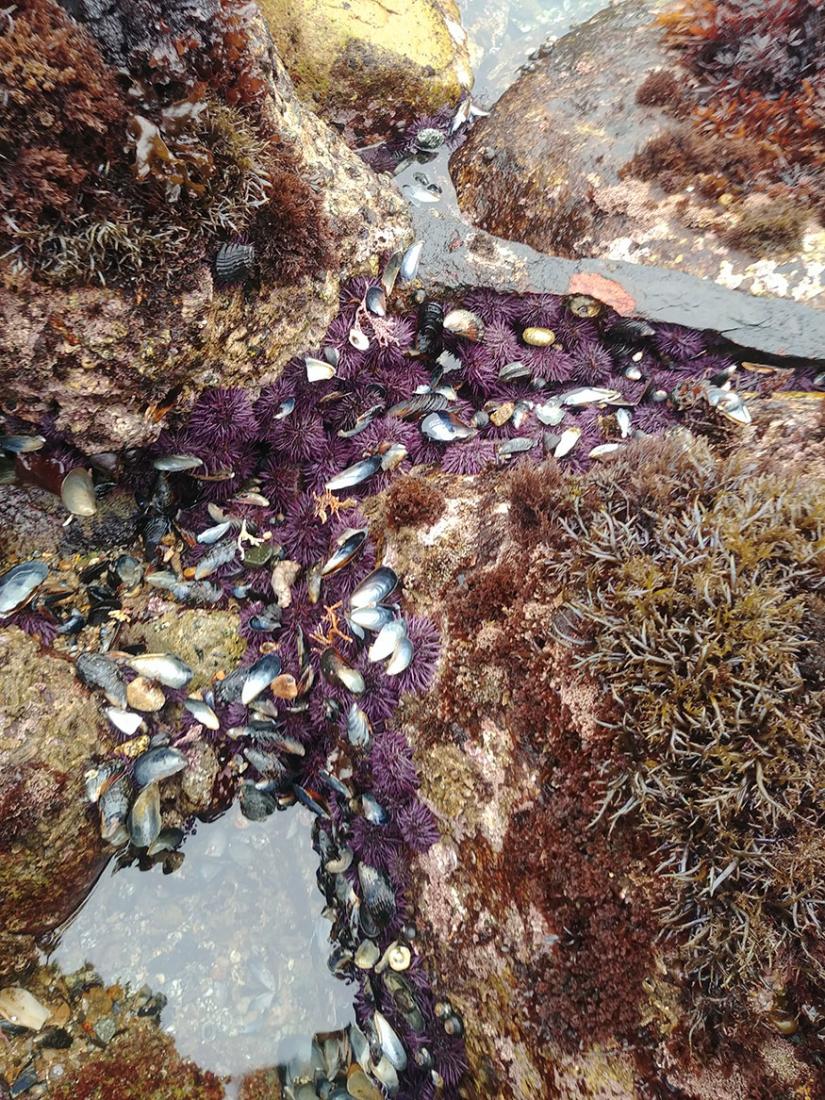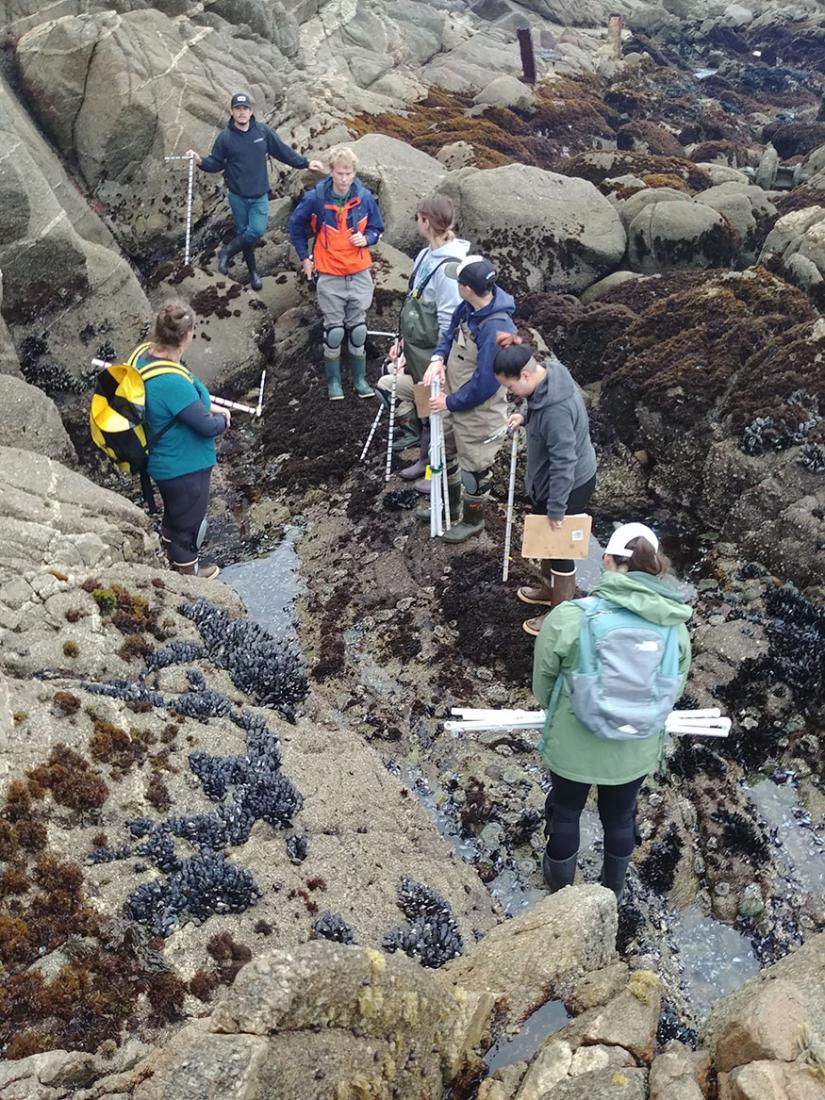By Gina Contolini, Kelp Management Extension Fellow
If you’ve recently gone diving around the Monterey Bay peninsula, you very well may have missed some big changes in marine life. But these changes didn’t escape researcher Dr. Alison Haupt thanks to big changes in her life that gave her a fresh new perspective.
It started with a “cataclysm of awfulness” that interrupted her research life. Haupt found herself unable to continue the subtidal, or fully underwater, marine ecology research that she knew and loved since her time as an undergraduate student at UC Santa Barbara. Stuck on land and limited by COVID-19 restrictions, she turned her attention quite serendipitously to the intertidal zone, which is exposed at low tide and accessible on foot without scuba diving.
Haupt noticed a discrepancy between urchin-kelp dynamics in subtidal and intertidal areas around the Monterey peninsula. Beneath the surface, there were barrens of starving “zombie” urchins that consumed and wiped out all fleshy algae including kelp. However, in intertidal areas, even where urchins congregated, algae was still plentiful. These observations led her to apply for and receive a research grant in the Kelp Recovery Research Program, a program co-funded by California Sea Grant and the California Ocean Protection Council in collaboration with the California Department of Fish and Wildlife to develop actional restoration methods for recovering kelp.
The primary research objective of her project, Informing restoration and recovery of central coast kelp forests: understanding the dynamics of urchin recruitment, reproduction and density, is to determine if intertidal urchin populations could be subsidizing subtidal populations. Harnessing the increased accessibility of intertidal zones, Haupt put together a team of undergraduate and postgraduate researchers at her institution, California State University Monterey Bay, to survey seven intertidal sites around the Monterey peninsula. The increased accessibility of intertidal compared to subtidal environments allowed her to involve more and younger students.
Haupt’s team found that intertidal urchin densities increased since 2002, but several years after observed increases in subtidal densities. With COVID-19 restrictions now more relaxed, Haupt looks forward to working with her team to unpack more about this intertidal urchin story by examining food (algal) resources, substrate types, and urchin gonad condition. This will help answer questions about how the intertidal urchins can coexist with fleshy algae and how the subtidal zombie urchins persist in barrens. Answering these questions are essential for restoration efforts that focus on removing subtidal urchins such as the Tanker Reef culling project in Monterey that started in 2021.
“If you want to do [urchin] culling, if you do it where recruitment [e.g., reproduction] is high, they’ll just come back right away,” Haupt explained.
Though she misses spending time underwater scuba diving, Haupt is grateful for a change in perspective that helps bridge these deeply interconnected marine environments.
“My undergrad self would never have believed I’d be working in the intertidal, but I love getting to see the connections between the intertidal and subtidal” said Haupt.
Working in the intertidal allows her to introduce a larger number and diversity of students to marine science who may otherwise have been deterred by the large barriers to subtidal marine field research. Overall, Haupt is excited to help open doors for students in marine science as well as for kelp restoration.


About California Sea Grant
NOAA’s California Sea Grant College Program funds marine research, education and outreach throughout California. Headquartered at Scripps Institution of Oceanography at the University of California San Diego, California Sea Grant is one of 34 Sea Grant programs in the National Oceanic and Atmospheric Administration (NOAA), U.S. Department of Commerce.